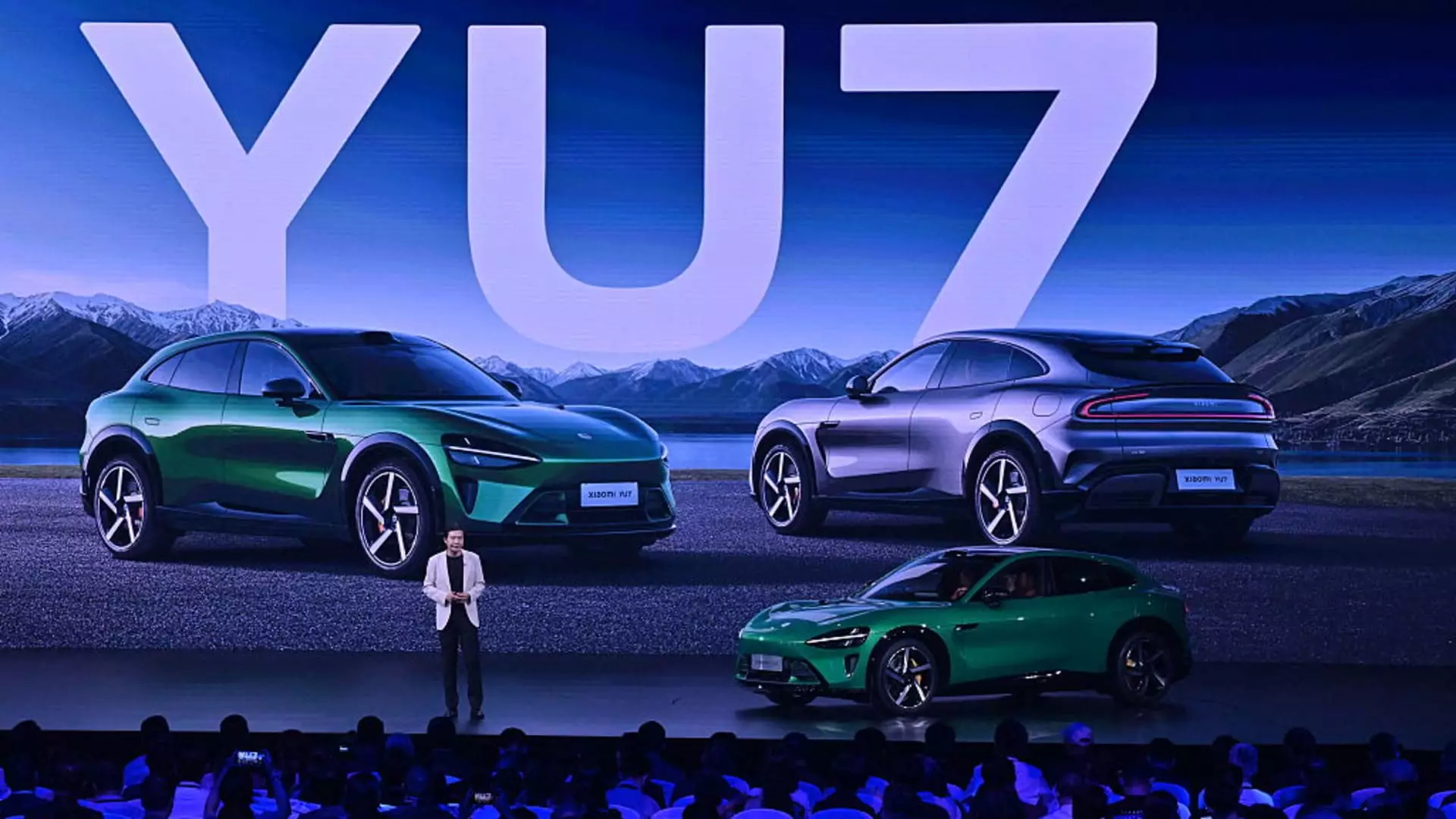In the bustling landscape of electric vehicles (EVs) in China, competition is fiercer than ever. Xiaomi, a company that evolved from a smartphone powerhouse to a contender in the electric vehicle arena, has set its sights squarely on dethroning Tesla’s Model Y. With the recent unveiling of the YU7 SUV, Xiaomi is not just entering the fray; it’s making an audacious push that reflects its ambitions and confidence in the market. The YU7 promises an impressive driving range of 760 kilometers (472 miles) on a single charge—surpassing even Tesla’s advertised range. This is a bold claim, as range anxiety remains a primary concern for consumers.
The launch of the YU7 is not merely about the vehicle itself; it’s a strategic maneuver aimed at seizing market share from industry leaders. According to Citi analyst Jeff Chung, the anticipated impact of the YU7 on Tesla’s sales could be significant, potentially reshaping the EV landscape in China. Xiaomi’s pricing strategy positions the YU7 to compete directly with Tesla, aiming for a range between 250,000 yuan and 320,000 yuan ($34,700 to $44,420) which places it at a competitive edge against the Model Y.
Xiaomi’s Strategy: A Double-Edged Sword?
While Xiaomi’s strategy appears aggressive and calculated, it raises questions about the sustainability of such rapid expansion into a highly saturated market. The company is betting on the YU7’s appeal to consumers looking for luxury features paired with reasonable pricing. Yet, the risks involved in launching a new model in an already competitive sector cannot be underestimated. The past performance of Xiaomi’s SU7 sedan demonstrates the fluctuating consumer interest, where sales peaked but subsequently dropped following a tragic incident that involved one of its vehicles. This has cast a shadow over consumer trust, especially in a market where safety is a growing concern.
Moreover, the fierce competition doesn’t just come from Tesla. BYD, Geely, and Wuling have established themselves as formidable rivals, consistently innovating and providing diverse offerings at various price points. While BYD’s successful budget models like the Seagull and Wuling’s Mini cars dominate the lower end of the market, Xiaomi must convincingly demonstrate that the YU7 offers value that justifies its pricing strategy, particularly in a market increasingly favoring economical choices.
The Innovation Barrier: Is Xiaomi Ready?
The innovation claims that accompany the YU7 launch demand scrutiny. Xiaomi’s recent advertisements touting superiority over Apple in technology could backfire if they fail to deliver on those promises. In an industry where trust is paramount, exaggerated claims or unverified features can detract from a brand’s credibility. Consumers today are more informed and sophisticated; they demand transparency and accountability, especially in an era where technology and safety intertwine.
The market’s response to the YU7 will be revealing, measuring not only the features and pricing but also the public’s willingness to embrace a new contender after the unfortunate incident linked to the SU7. A successful launch will depend on more than just performance metrics; fostering consumer trust will be crucial.
The Coming Storm: Tesla’s Response
As Xiaomi intensifies its campaign against Tesla, the American juggernaut will not remain passive. Tesla, known for its agility, could respond with price adjustments or promotional strategies to maintain its market-leading position. The dynamics of consumer loyalty in the EV segment remain fluid. As buyers are increasingly swayed by features, aesthetics, and brand reputation, Xiaomi will need to ensure that the YU7 stands out in crowded showrooms.
Tesla’s historical market dominance may be challenged, but the company’s extensive infrastructure, brand presence, and innovation pedigree pose significant hurdles. While Xiaomi may envision the YU7 as a game-changer, its path forward is riddled with complexities that demand not just ambition but a genuine understanding of the EV market’s pulse.
Xiaomi’s drive to carve a niche in the electric vehicle landscape is symbolic of a larger shift towards a more competitive and innovative future. Whether it can dethrone Tesla or simply coexist within this evolving ecosystem will depend on its ability to navigate consumer perception, technological trust, and market volatility.

